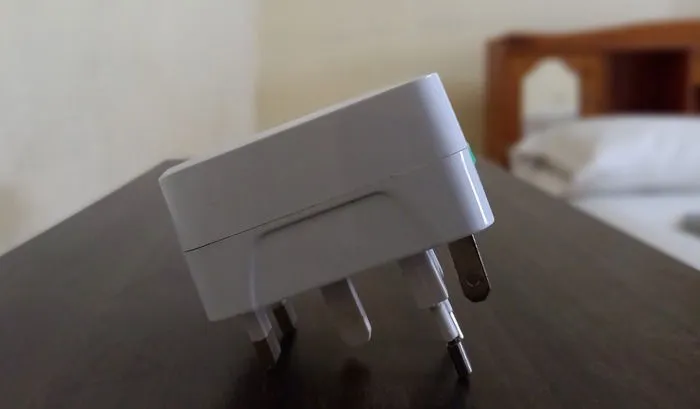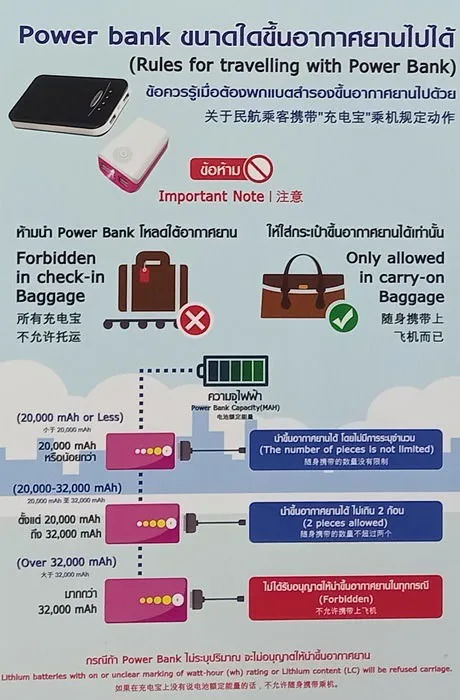Enhance Your Remote Work Experience: 8 Essential Tools for Digital Nomads

The digital nomad lifestyle opens up exciting opportunities for remote workers to explore new places, build connections, and accumulate diverse experiences. However, this way of life comes with its own set of challenges. Without reliable Internet access and the appropriate devices, finding comfort in work while on the road can be significantly more difficult than working from home. After traveling for over six months, I’ve discovered the following essential tech tools that help digital nomads maintain seamless remote work.
1. Universal Adapter
It’s well established that electrical outlets vary from country to country. For instance, when traversing Southeast Asia, you may find yourself switching from Type C (the Europlug) in Bali to Type G (which is used in the United Kingdom) when you reach Kuala Lumpur. Additionally, voltage levels fluctuate, ranging from 120 V/60 Hz in the U.S. to 230 V/50 Hz in India. Connecting devices meant for one region to an outlet in another can cause irreparable damage.
Yet, even experienced travelers might forget an important must-have: a universal adapter. This versatile tool allows you to connect all your electronic devices to local plugs effortlessly. Many universal adapters also incorporate voltage conversion features, serving as an essential bridge to any unfamiliar electrical system.

While you can typically find these adapters in airport shops, to save on overpriced options, consider purchasing online. I managed to pick one up at a flea market for under $4 five years ago, and it still works perfectly. I always keep a spare adapter on hand just in case.
2. Multiport Power Strip
Upon arriving in a new country, you may not know what your accommodation situation will be like, which can change unexpectedly. One common frustration is limited electric outlets in your room. Carrying a multiport power strip can alleviate this issue, allowing you to plug in multiple devices simultaneously, whether they be smartphones, tablets, or laptops. Always opt for a power strip that includes surge protection for added safety.

Even though multiport strips can be a bit bulky, their convenience makes them worth the luggage space. Unlike power banks that are restricted to cabin baggage, you can safely check these in, as they lack batteries. Regardless of whether you’re staying in a hotel, hostel, or a rented apartment, these handy tools can instantly convert any space into a productive workplace.
3. Travel SIM
A digital nomad lifestyle is impossible without consistent, high-speed Internet access. A decade ago, securing affordable and reliable Internet in new locations was often trial and error. Nowadays, obtaining an international travel SIM with 5G data capabilities has become significantly easier. You can also acquire a local 5G SIM (or eSIM) right at international airports. This is often the best option, offering the same network coverage as local residents.
If you intend to depend solely on hotel Wi-Fi for your work, prepare for frustration. Even in major tourist spots, many hotel networks have slow speeds and frequent disconnections that can be incredibly disruptive. Additionally, using public Wi-Fi can pose security risks; I’ve stayed in questionable hotels where trusting their network for sensitive transactions felt unsafe. I’d much rather rely on a reputable telecommunications provider.
4. Wireless Mouse
If your laptop is your primary work device, a wireless mouse is an essential tool for reducing wrist tension, finger strain, and the risk of repetitive strain injuries like carpal tunnel syndrome. Lightweight and cable-free, a wireless mouse fits seamlessly into a minimalist remote work setup.

In addition to ergonomic advantages, wireless mice are budget-friendly and easy to replace. Operating on Bluetooth with rechargeable batteries, they can be set up effortlessly in any environment. Unlike a touchpad, a wireless mouse allows for greater flexibility in your working position and on diverse surfaces.
5. Fast Charger
Unpredictability is a hallmark of the digital nomad experience. You may find yourself needing to adjust travel plans spontaneously or vacate your accommodation swiftly, leaving little time to charge your devices. The last thing you want is for your smartphone or laptop to die unexpectedly.
Having a fast charger is crucial. Ensure compatibility with your devices, as there are various fast-charging standards such as Apple Fast Charge for iPhones and OnePlus Warp Charge for relevant Android users. GaN chargers are particularly beneficial when charging several devices simultaneously. Regardless of your choice, remember to activate the fast charge feature on your device.
6. Power Bank
Alongside fast chargers, power banks act as a crucial backup for emergency charging. Depending on the model, they can provide anywhere from one to five full charges. Some power banks are versatile enough to support both phones and laptops, making them a vital tool for anyone on the move.
However, power banks can create travel challenges without proper strategy. They are typically banned from checked luggage due to potential battery failure concerns. Plus, regulations regarding capacity can vary widely.

For instance, as of my recent travel from Bangkok, power banks exceeding 32000 mAh are strictly prohibited. If your power bank is 20000 mAh or above, you’re limited to only two. Since these regulations can differ by country, it’s wise to familiarize yourself with security policies before flying with a power bank in your carry-on luggage.
7. Portable Mobile Hotspot
What you often miss while traveling is the dependable speed and comfort of a good residential or office Internet connection. Portable routers allow you to create a mobile hotspot using any network at your disposal. For example, this TP-Link model supports phone tethering, can be powered by a power bank, and delivers speeds reaching up to 1.5 Gbps.
Do bear in mind that portable hotspots are viewed as power banks by airport security, so you’ll need to carry them in your cabin baggage. There’s also a chance some networks may restrict your device due to fair usage policies to prevent congestion. Hence, these hotspots are best utilized in airports, coworking spaces, and similar venues that permit them.
8. Noise-Canceling Headphones
This gadget is perfect for digital nomads working in coworking spaces, hostels, cafes, and other public environments. While you can’t control your surroundings, a set of noise-canceling headphones helps drown out background chatter that can detract from your concentration.

Besides muffling outside noise, these headphones help project an aura of focus. They act like a visible “do not disturb”signal, minimizing unnecessary interruptions due to small talk or greetings from acquaintances.
While these are pivotal tools for digital nomads, this list is by no means exhaustive. Other useful items include USB flash drives and SD cards for additional data storage. I also recommend wearing a smartwatch while traveling; they can be incredibly handy for emergency calls and texts. Although some may question their utility, I find them as essential as smartphones.
Image Credit: Pixabay. Screenshots and images by Sayak Boral.


Leave a Reply